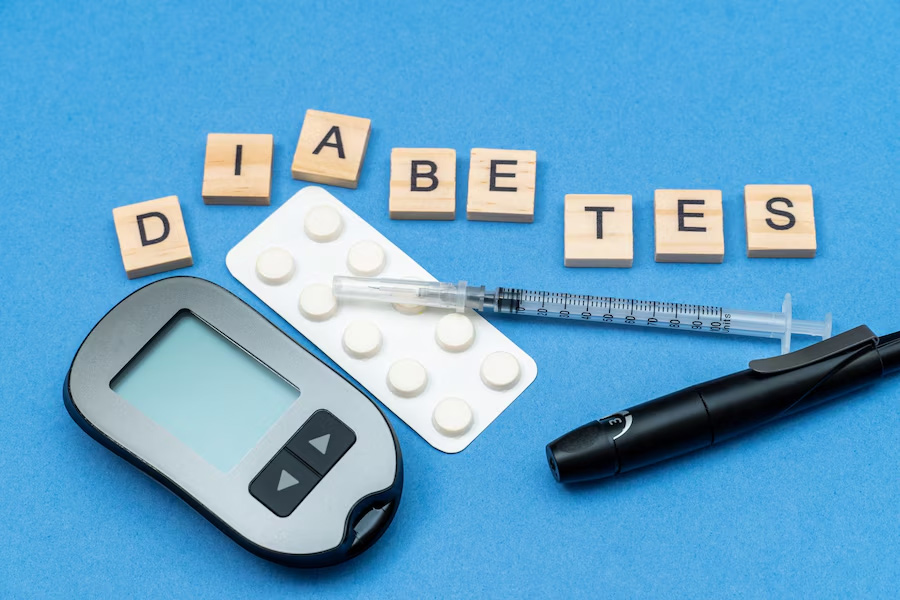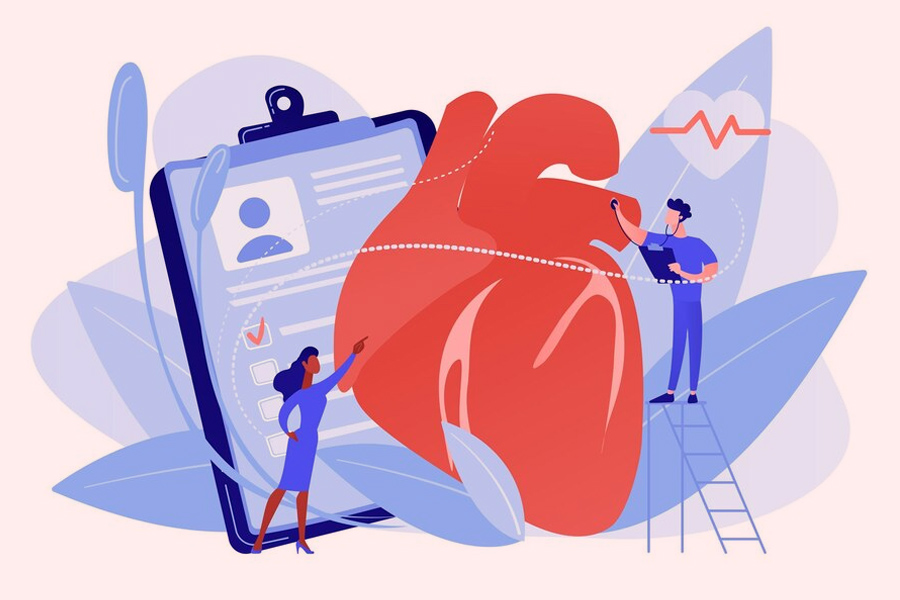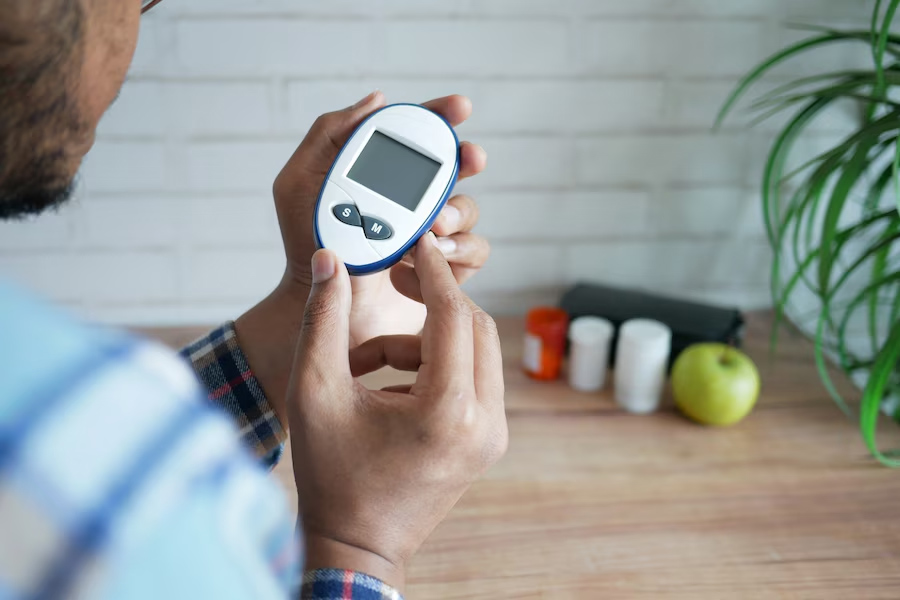
When it comes to diabetes, many of us fall into the trap of thinking it only affects those with weight issues or unhealthy lifestyles. But the surprising truth is that even slim, seemingly healthy people can face this silent threat. High blood sugar, also known as hyperglycemia, can affect individuals of any body type, and ignoring its warning signs can have serious health consequences. We spoke to our expert Dr Srinath Aswathiah, Consultant - Diabetologist and Endocrinologist, Gleneagles BGS Hospital, Kengeri, Bengaluru, who explained how diabetes can develop in individuals regardless of weight and why early detection is crucial.
Table of Content:-
Diabetes and High Blood Sugar

"Diabetes is a metabolic disorder characterised by elevated glucose levels in the blood. This can occur due to inadequate insulin production, insulin resistance, or both," said Dr Aswathiah. While lifestyle factors like obesity and physical inactivity are significant risk factors, diabetes is influenced by a range of other factors, including genetics, age, and even stress.
Why Thin People Are Not Exempt
It’s a common misconception that being thin guarantees protection against diabetes, but the reality is much more complex.
The Centers for Disease Control and Prevention (CDC) reports that about 12.5% of U.S. adults with type 2 diabetes have a Body Mass Index (BMI) within the healthy or normal range. Meanwhile, a 2015 study conducted in India on approximately 10,000 type 2 diabetes patients found that about 3.5% of them were lean, with a BMI of less than 18.5, while the majority, around 63%, had an ideal body weight at the time of diagnosis.
Here are some reasons why thin people may develop diabetes, as listed by the expert:

- Genetics: A strong family history of diabetes can predispose thin people to the condition, regardless of their weight.
- Lifestyle Choices: Poor diet, smoking, and lack of exercise contribute to insulin resistance, even in people with a normal BMI.
- Visceral Fat: Thin individuals may still have unhealthy fat deposits around internal organs, especially in the liver and pancreas, leading to metabolic dysfunction.
- Pancreatic Issues: Thin individuals may have an impaired pancreas or low insulin production, leading to high blood sugar levels.
- Type 1 Diabetes: This autoimmune form of diabetes often occurs in young, lean individuals and requires insulin therapy for management.
- Type 2 Diabetes in Lean Individuals: Previously, it was a common myth that lean individuals were more likely to have only type 1 diabetes. However, in recent years, there has been a rise in type 2 diabetes among thin individuals. This is likely caused by a combination of insulin resistance and beta-cell failure, which disrupts glucose regulation.
Also Read: Addressing India's Diabetes Dilemma: Never Too Early To Test But May Be Too Late To Treat
Warning Signs of High Blood Sugar
Spotting the warning signs early can make a significant difference in preventing long-term damage. Dr Aswathiah listed the warning signs as follows:

- Frequent Urination and Thirst: Excess sugar in the blood draws water from tissues, increasing thirst and urination.
- Unexplained Weight Loss: The body starts breaking down fat and muscle for energy when it cannot utilise glucose effectively.
- Fatigue: Elevated blood sugar can cause energy crashes, leaving you feeling tired even after rest.
- Blurred Vision: Elevated sugar levels can cause fluid imbalances in the eyes, resulting in vision issues.
- Slow-Healing Wounds: Diabetes impairs circulation and immune response, delaying wound healing.
The Hidden Dangers of Ignoring Warning Signs
Overlooking these symptoms can lead to serious health complications over time. If high blood sugar is left unmanaged, it can result in complications, such as:

- Cardiovascular Diseases: Diabetes significantly increases the risk of heart attacks and strokes.
- Neuropathy: Nerve damage resulting in pain, tingling, or loss of sensation in extremities.
- Kidney Damage: Chronic high blood sugar can harm the kidneys, potentially leading to kidney failure.
- Eye Complications: Conditions like diabetic retinopathy can cause vision loss or blindness.
- Diabetic Ketoacidosis (DKA): Particularly in type 1 diabetes, unchecked high blood sugar can cause this life-threatening condition.
Also Read: Diabetes And Ageing: Expert Explains The Link Between Age And Diabetes Symptoms And Progression
Prevention and Management
The good news is that diabetes can often be managed or even prevented with the right approach. Key steps include:

- Regular Screening: Individuals, regardless of weight, should undergo routine blood sugar tests, especially if they have a family history of diabetes.
- Balanced Diet: A diet that includes whole grains, lean proteins, healthy fats, and vegetables can help prevent insulin resistance.
- Physical Activity: Regular exercise improves insulin sensitivity and helps maintain metabolic health.
- Avoid Smoking and Alcohol: Both can exacerbate insulin resistance and damage internal organs.
- Stress Management: Chronic stress can elevate cortisol levels, impairing blood sugar regulation.
A Call to Action
Dr Aswathiah concluded, “It’s time to move past the myth that diabetes is a disease only for the overweight. Even thin individuals must pay attention to their lifestyle choices and stay vigilant for early warning signs of high blood sugar. Timely diagnosis and management can significantly reduce the risk of complications and improve quality of life.”
[Disclaimer: This article contains information provided by an expert and is for informational purposes only. Hence, we advise you to consult your professional if you are dealing with any health issues to avoid complications.]
Also watch this video
How we keep this article up to date:
We work with experts and keep a close eye on the latest in health and wellness. Whenever there is a new research or helpful information, we update our articles with accurate and useful advice.
Current Version